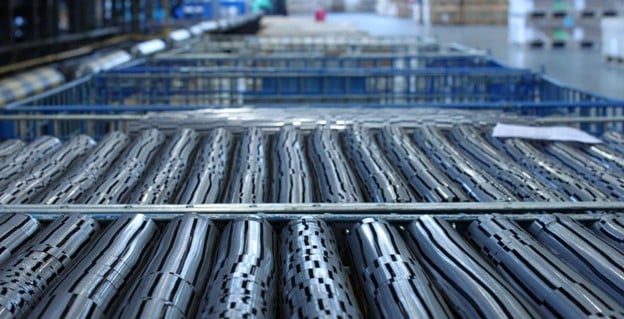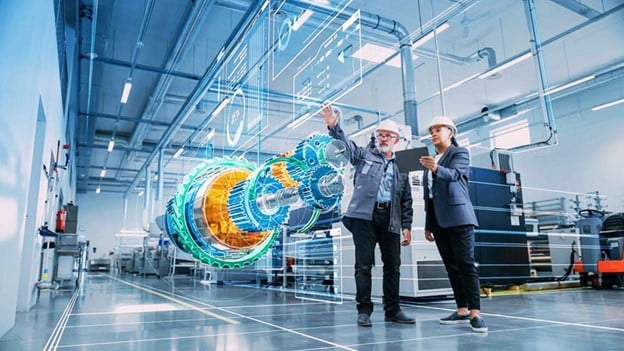Sustainability has become one of the most discussed terms in recent times. Accordingly, manufacturing processes related to electric motor lamination are no exception.
As more companies focus on reducing their environmental impact, the demand for sustainable solutions in this field has grown.
One such company in this direction is Lam 365, a Chinese motor lamination company known for its eco-friendly approach.
Why Sustainability Is Key in Electric Motor Lamination
You may wonder why sustainability should even matter in motor lamination. Well, the process conventionally uses a great deal of energy and material.
But now, manufacturers like Lam Motor have found ways to reduce waste and conserve resources.
Electric motors are found in everything from the automotive industry to industrial machinery.
However, manufacturing them requires considerable resources. Manufacturing these motors involves energy use, material wastage, and other environmental impacts.
As a result, more companies will be researching and developing sustainable ways of reducing their footprint.
Sustainable Materials in Lamination Manufacturing
Sustainability can be achieved quite easily by selecting better materials. Many manufacturers use recycled metals or materials that have lower impacts on the environment compared to other materials. This reduces the demand for new raw materials and produces less waste.
For instance, an importer of generator motors in the USA was working with a company called Lam 365 based in China for motor lamination.
He mentioned they were very professional and followed sustainable methods for laminating generator motors. It would be a great example for Lam Motor to care for the environment.
Saving Energy in the Manufacturing Process
Another way of being sustainable is by utilizing less energy. In fact, motor laminations can be made in really power-consuming ways, especially when the need arises to cut or stamp metal.
Some companies now use energy-efficient machines that are used in doing this work. These machines save energy and, consequently, money as well as help in conserving the environment.
A company named Lamistacks has become reputed for emphasizing energy-saving procedures. They use machines and methods that require less power, which reduces their carbon footprint
This indeed is an example of how sustainable practices are leading towards a greener industry.
Minimizing Waste by Using New Techniques
Waste generation is one of the major problems in manufacturing. Traditional methods often create a lot of scrap metal, which can end up in landfills.
This is because such quantities of waste are undesirable. However, many companies these days find ways of reducing them.
- Newer techniques allow them to recycle more material and thus create less waste.
One of these companies is Lam Motor. By using modern methods, they minimize waste and maximize efficiency. By doing so, they add to electric motor lamination sustainability.
The Future of Sustainable Lamination
The world, slowly and surely, is turning to cleaner energy. It would also be required that methods of making electric motors change. Sustainability helps attain a lower environmental impact, energy savings, and cost-cutting.
Those businesses that work on such sustainability practices are leading the way to a better world.
Businesses like Lam 365 and Lamistacks are showing what’s possible. They focus on using sustainable materials, saving energy, and reducing waste.
With these companies, one may promote ecology-friendly performances without losing quality.
The Role of Advanced Technologies in Sustainability
Using AI and Automation
Sustainability in electric motor lamination is enhanced by the adoption of AI and automation in the manufacturing process. Automated systems can minimize human error and ensure that materials are used with precision, reducing waste and improving overall efficiency. Moreover, smart sensors can detect inefficiencies early on, allowing manufacturers to optimize production for energy savings.
3D Printing and Its Impact
Emerging technologies such as 3D printing are revolutionizing motor lamination manufacturing. This method allows manufacturers to create custom, intricate designs with minimal waste, eliminating the need for cutting large sheets of metal. 3D printing can be a game-changer for sustainable production by drastically reducing material use and energy consumption.
Best Practices for Implementing Sustainable Manufacturing
1. Conduct Energy Audits
Before investing in new equipment, it’s important to assess the current energy use of your lamination manufacturing process. Energy audits can identify inefficiencies and help prioritize upgrades, whether it’s for equipment or workflow adjustments.
2. Optimize Material Sourcing
Choosing eco-friendly materials is key. Look for suppliers who offer recycled metals or materials with a lower carbon footprint. Partnering with green-certified suppliers ensures that your entire supply chain aligns with sustainable goals.
3. Train Employees in Sustainability
Employees play a crucial role in maintaining sustainable practices. Continuous training on energy-efficient practices, waste reduction, and recycling can help embed sustainability into the company’s culture. Encouraging employee participation in sustainability initiatives can further reduce resource consumption.
FAQs on Sustainable Practices in Electric Motor Lamination
1. What makes electric motor lamination manufacturing unsustainable?
Traditional methods often involve high energy use, resource extraction, and the creation of waste materials, especially metal scrap. This increases the carbon footprint of production and contributes to environmental degradation if not managed properly.
2. How can using recycled materials in motor lamination reduce environmental impact?
Recycled materials, such as silicon steel or other metals, reduce the need for new raw material extraction, which consumes significant energy and natural resources. By incorporating recycled materials, manufacturers can lower waste, energy use, and emissions during production.
3. Are energy-efficient machines more expensive to implement?
Initially, energy-efficient machines might come with a higher price tag, but the long-term savings in energy costs, reduced waste, and lower environmental impact make them a worthy investment. Companies like Lam Motor have adopted these machines to remain competitive while staying eco-conscious.
4. How does sustainable lamination improve motor performance?
By using energy-efficient and low-waste production methods, manufacturers create more consistent, high-quality laminations. This results in motors that run cooler, waste less energy, and have longer lifespans.
5. Can small businesses afford sustainable motor lamination practices?
Yes, smaller companies can implement sustainable practices by partnering with eco-conscious manufacturers like Lam Motor or Lamistacks. Sustainable materials and energy-efficient technologies are becoming more accessible, helping businesses meet environmental goals without breaking the bank.




